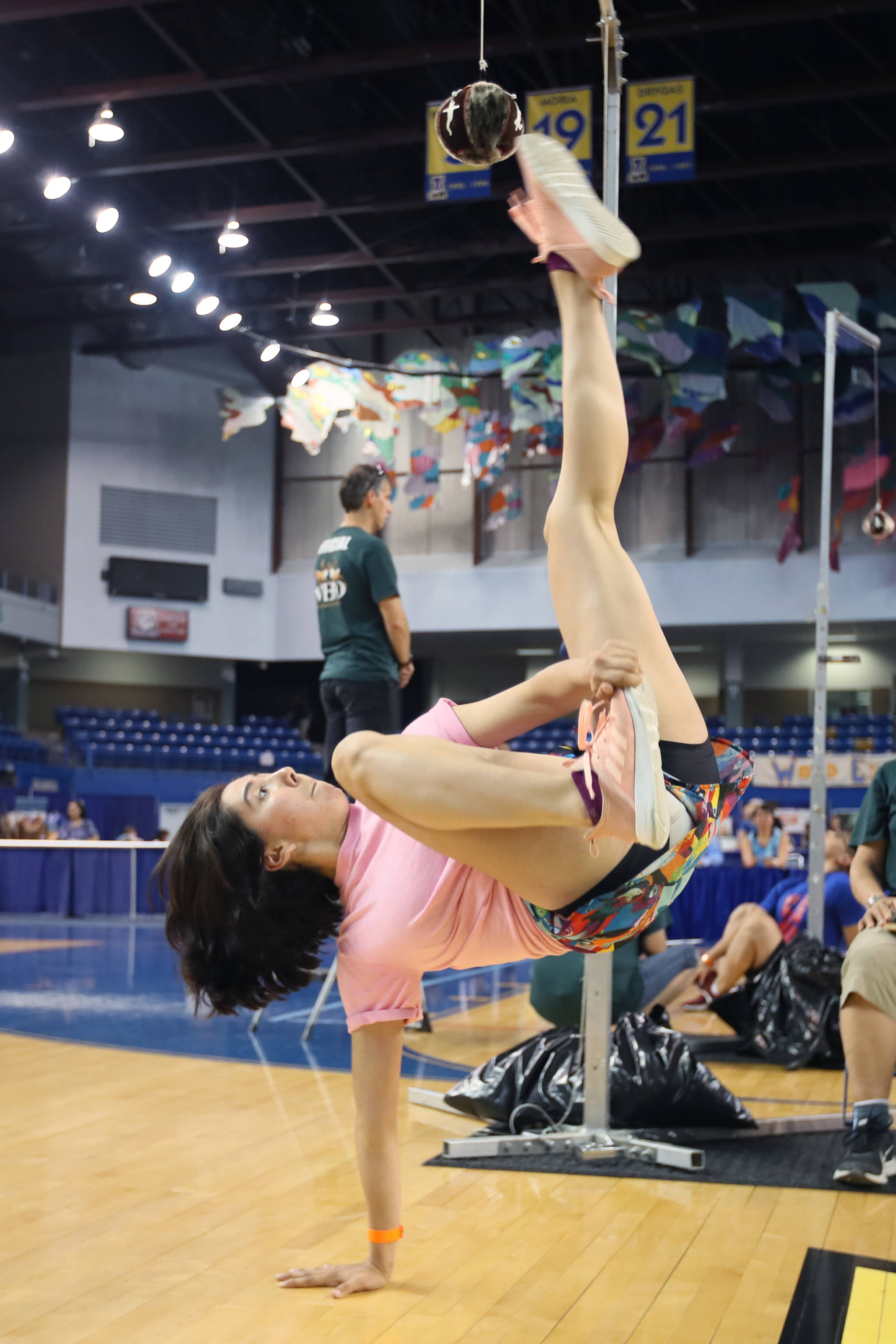A contingent of Juneau athletes returned home this week with 14 medals from the World-Eskimo Indian Olympics, one of the largest-ever such tallies won by the capital city.
Kyle Worl, a two-year leader of the Juneau School District’s Native Youth Olympics program, led a group of 14 athletes at the four-day event in Fairbanks. Started in 1961, the annual competition includes over 20 games based on Alaska Native traditional hunting and survival skills, and takes place at the Carlson Center in Fairbanks.
[For the first time since the 1980s, Juneau will compete at the Native Youth Olympics]
“Really just amazing results,” Worl said by phone on Tuesday morning. “Last year, besides myself, the only other person to medal was Matthew (Quinto) in the blanket toss. So we’re really proud of their hard training.”
Worl had the most medals on the team with seven, Sara Steeves had the second-most with two and Ezra Elisoff, Crystal Worl, Bryan Johnson, Matthew Quinto and Patrice DeAsis each finished with one.
Worl won medals in the kneel jump, knuckle hop, grease pole walk, two-foot high kick, bench reach, blanket toss and one-hand reach.
Steeves, one of five of Juneau’s returning athletes to the Fairbanks competition, took home the gold in the Alaskan high kick and bronze in the two-foot high kick. After being a second-round exit from the Alaskan high kick competition last year, Steeves was the last competitor standing this year by a long shot. Steeves successfully balanced on one-hand and kicked with her left leg a small ball suspended 72 inches in the air. The next-highest kick was 67 inches.
“It was really rewarding because when we were practicing that was really the only game I was working on,” Steeves said. “I was already seeing improvements since NYO state and so I just used that inspiration to work harder for the high kick.”
Quinto was another one of the best Alaskan high kickers, hitting 82 inches. The height was meaningful because it required Quinto to “go vertical,” or complete a hips-over-head, one-armed hand stand. Worl said it’s a big deal for any athlete to “go vertical,” and was reflective of the extra time the team spent working on the Alaskan high kick.
“If you have an athlete that can go vertical, that athlete really gets noticed,” Worl said. “That’s something I want for our Juneau athletes is that they are noticed for their training and their performance and things like Arctic Winter Games, they look for athletes that can go vertical.”
That’s a milestone Steeves is currently working on.
“One of things I’m really focusing on is getting my hips above my shoulder,” she said. “You have to get the movement in your shoulder to go back to line it up.”
Worl said he’s hoping to take several athletes to the Arctic Winter Games, slated for next March in Whitehorse. Sealaska Heritage Institute has sponsored the Native Youth Olympics program, and helps pay for trips to statewide competitions.
• Contact sports reporter Nolin Ainsworth at 523-2272 or nainsworth@juneauempire.com. Follow Empire Sports on Twitter at @akempiresports.

